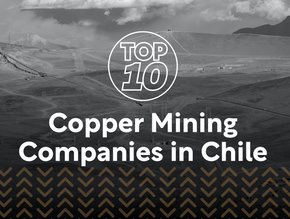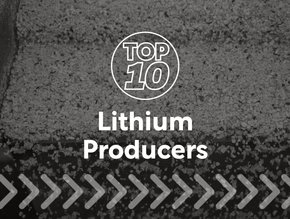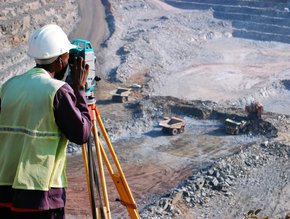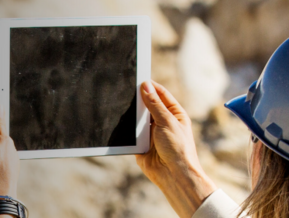10 business risks facing the mining and metals industry in 2016-17

1) Cash optimisation
Market volatility, the unpredictable and never ending shifting of commodity prices creates uncertainty. Uncertainty, quite naturally, represents risk.
Mining companies are facing an increasing challenge to think long term, there is such a limited visibility of pricing and demand and how it will change that companies just cannot afford to risk their balance sheets. EY states that cash is king again and mining companies can manage the liquidity of their balance sheets through sustainable cost reductions, but importantly, ones that do not dissolve value.
These same reductions should instead look to increase a focus on working capital and improve the capital effectiveness.
2) Capital access
For many, if not all mining companies, raising capital is one of the biggest issues. According to EY, the total capital raised in 2015 was 10 percent lower YOY. Add to this that loan finance to the sector was also declining, and those that did secure loans were using them refinance existing infrastructure as opposed to delving into new projects.
Companies are facing limited access to capital as banks are only offering financing to mining companies what can guarantee the security to back the debt. In essence, a bank isn’t willing to take a risk on a mining company that can talk the talk, but not walk it.
Heading into the new year, mining companies will be looking at alternative sources of finance and in some cases, realigning portfolios to mitigate this challenge.
3) Productivity
Working hard or hardly working? Productivity is to this day one of the top three risks that mining companies and miners are struggling to improve on. EY identifies asset productivity as a particular focus, with a “volume at any cost” during the mining boom generating a focus on “production at any cost.”
Productivity often manifested itself in the guise of making mines larger. The bigger the mine the greater the complexity, which required silos and different skill set requirements. Whittle it down and essentially you’re left with a disconnect across your operations.
Many companies that undergo a complete transformation will break down silos as the first and in some cases most important step. EY advises that the key to long term sustainable productivity improvement is by looking at assets through the lense of a business system, the relentless pursuit of loss and supporting the players already existing within the organisation who are critical in productivity transformation.
4) Social license to operate
The best and most successful mining companies are active participants in community engagement. There is true value in operating in tandem with communities and there is a clear mutual value creation there. Unfortunately in some regions, mining is associated with environmental damage, conflict and even death.
For a mining company, all across the sector, to maintain a strong social license to operate, sustainability needs to fit into long term planning. Measure success or KPI’s with productivity outcomes as well as remuneration structures.
5) Transparency
How much does a mining company really contribute to local economies and societies? Transparency. By providing local communities, governments, and even detractors of the industry a clear access to information, a company can essentially prove to the world that it is 100 percent true to its word.
Think of the impact that will have on an investor. If a mining company experiences payment disputes, like some currently are, the information to end those disputes or instil faith in that company is readily available. But if it isn’t, is an investor really going to simply take the company’s word for it? That’s a lot of trust that could backfire dramatically.
And what does that achieve? Greater confidence from investors and trust from stakeholders, crucial to longevity of mining organisations.
6) Switch to growth
Commodity prices, whether strong or weak, can often dictate a mining company’s outlook on the future. EY states as much, mining companies very often think pro-cyclical short term. But it is important for companies to remember to think of the future and future growth. It’s not enough to survive, growth is what will make a company stand tall above competitors.
For that to happen, companies must understand the options available to them. Understand the market, invest (not literally) in time spent watching and analysing the market so that if an opportunity arises, a mining company is in prime position to capitalise on it and ultimately boost long-term shareholder value.
EY recognises that this may very well include downsizing portfolios in order to realise capital, but it is important to remember that this will effectively allow a company to use that capital to support future growth opportunities.
7) Access to energy
Energy consumption, according to EY, can account for 15 – 40 percent of the total operating budget of a mine. When choosing an energy source, cost is essential.
Mining companies then must do more to identify, prioritise and implement the best option to ensure long term tangible and intangible benefits.
8) Joint Ventures
Joint Venture agreements, if managed well, can deliver undeniable value to stakeholders. They can improve the value of portfolios and, in some cases, joining forces can provide access to reserves and capabilities that only a JV can provide.
As with anything, there is risk. In this instance, the risk lays quite clearly at the fact that it could go wrong and a company could face huge disruption which will result in loss of time and money.
9) Cyber security
In the modern world, technology in any industry is increasing and for the mining industry technological innovation is moving towards more cloud based data storage and analytical solutions.
An increased cyber space creates an increased risk of cyber-attack. IT and operational technology in the mining industry are becoming one and the same and so security must be strengthened.
Companies will need to understand the risk exposure across both IT and OT and ensure that there is significant time and money invested in understanding how important it is to prevent cyber-attacks on financial, reputational and intellectual property.
10) Innovation
Sticking with technology, innovation presents a different kind of risk. Innovation is without a doubt a key enabler of productivity improvement as well as providing a competitive edge. When the market improves, mining companies should look at and collaborate on innovation with other companies within the sector, other sectors, service companies and academic institutions.
Ey believes that companies should align innovation programs to strategy, have a clear management program, have the right structure, processes and systems in place, and most importantly, not to just focus on technology.






